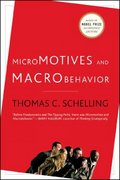Question
1. The Johnsville Co. produces pipe insulation at a cost of $10 per ton. It is also known that for every ton of insulation it
1. The Johnsville Co. produces pipe insulation at a cost of $10 per ton. It is also known that for every ton of insulation it produces it also vents into the air one ounce of asbestos fibers, which are a very hazardous substance. Johnsville could contain these fibers at a cost of $4 per ounce. The demand for pipe insulation is given by: Q = 2640 - 120 P and Johnsville is the sole producer. (a) In the absence of any regulation, how much insulation would Johnsville produce, and how much profit would it make, if it sought to maximize profits?
(b) Suppose the pipe insulation industry were perfectly competitive, with every firm able to manufacture pipe insulation at a cost of $10 per ton. What would be the level of production now?
(c) What is the socially efficient level of production of pipe insulation, assuming that the damage caused by the asbestos fibers is greater than the $4 cost of abatement? Under this assumption, can you say which situation (monopoly or competition) is better from the social point of view? (Hint: Set the external damage caused by an ounce of asbestos fibers to x, then calculate the difference in deadweight loss between the monopoly and the competitive solutions, as a function of x.)
Step by Step Solution
There are 3 Steps involved in it
Step: 1

Get Instant Access to Expert-Tailored Solutions
See step-by-step solutions with expert insights and AI powered tools for academic success
Step: 2

Step: 3

Ace Your Homework with AI
Get the answers you need in no time with our AI-driven, step-by-step assistance
Get Started


